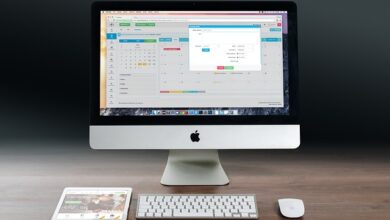How to Take Notes Like a Pro & Ace Your Exams

Taking effective notes is one of the most powerful tools for academic success. Whether you’re in high school, college, or pursuing professional certifications, mastering the art of note-taking can help you retain information, organize your thoughts, and excel in exams. But how do you take notes that are both efficient and effective? In this guide, we’ll walk you through proven strategies to take notes like a pro and ace your exams.
Why Note-Taking Matters
Before diving into techniques, let’s understand why note-taking is so important:
- Improves Retention : Writing things down activates different parts of your brain, helping you remember key concepts.
- Organizes Information : Notes provide a structured way to review material, making it easier to study later.
- Encourages Active Learning : Taking notes forces you to engage with the material instead of passively listening or reading.
- Boosts Exam Performance : Well-organized notes serve as a personalized study guide tailored to your learning style.
Now, let’s explore how to take notes effectively and use them to crush your exams.
Step 1: Choose the Right Note-Taking Method
There are several note-taking methods, each suited to different types of learners and subjects. Here are some popular options:
1. Cornell Method
- How It Works : Divide your page into three sections:
- Cue Column (left): Write keywords, questions, or prompts.
- Notes Column (right): Jot down main ideas, explanations, and details.
- Summary Section (bottom): Summarize the key takeaways after class.
- Best For : Organized learners who want a clear structure for reviewing notes.
- Why It Works : The summary section reinforces understanding, while the cue column helps with quick recall during revision.
2. Outline Method
- How It Works : Use headings, subheadings, and bullet points to create a hierarchical structure.
- Main topics → Subtopics → Supporting details.
- Best For : Subjects with lots of facts, such as history, biology, or law.
- Why It Works : The logical flow makes it easy to see relationships between ideas.
3. Mind Mapping
- How It Works : Start with a central idea in the middle of the page and branch out with related concepts, using colors, symbols, and visuals.
- Best For : Creative thinkers and visual learners tackling complex topics like psychology or literature.
- Why It Works : Mind maps mimic how the brain connects ideas, aiding memory and creativity.
4. Charting Method
- How It Works : Create tables or charts to compare categories or themes side-by-side.
- Best For : Data-heavy subjects like economics, statistics, or chemistry.
- Why It Works : Comparisons become visually clear, simplifying analysis.
5. Sentence Method
- How It Works : Write every new thought or fact as a separate sentence.
- Best For : Fast-paced lectures where capturing all information is critical.
- Why It Works : Quick and straightforward, but less organized for long-term review.
Step 2: Prepare Before You Start Taking Notes
Preparation is key to taking effective notes. Follow these steps before class or study sessions:
- Review Previous Material : Skim your last set of notes to refresh your memory and identify gaps.
- Preview New Content : Read assigned chapters or slides beforehand to familiarize yourself with key terms and concepts.
- Gather Supplies : Have pens, highlighters, notebooks, or digital tools ready. If typing, ensure your device is charged and distraction-free.
- Set Goals : Decide what you want to focus on—key definitions, formulas, or examples—to stay targeted.
Step 3: During Class or Study Sessions
When actively taking notes, keep these tips in mind:
1. Be Selective
Don’t try to write everything verbatim. Focus on:
- Key concepts and definitions.
- Examples and applications.
- Questions or areas you find confusing.
2. Use Abbreviations and Symbols
Develop shorthand to save time. For example:
- “w/” = with
- “→” = leads to
- “e.g.” = for example
3. Highlight Important Points
Use color-coding or underlining to emphasize critical information. For instance:
- Blue for definitions.
- Green for examples.
- Red for warnings or common mistakes.
4. Leave Space for Additions
Leave margins or blank lines to add clarifications, diagrams, or additional notes later.
5. Stay Engaged
Ask questions, participate in discussions, and mentally summarize what’s being taught. Engagement enhances retention.
Step 4: Review and Refine Your Notes
After class or a study session, spend 10–15 minutes refining your notes:
- Fill Gaps : Clarify unclear points by consulting textbooks, classmates, or online resources.
- Summarize : Write a brief summary at the bottom of the page or in a separate section.
- Organize : Reformat messy handwriting or restructure disorganized notes.
- Highlight Key Ideas : Use markers or sticky notes to flag essential information.
This step ensures your notes are polished and ready for future review.
Step 5: Use Your Notes Effectively for Exam Prep
Your notes are only as good as how you use them. Here’s how to leverage them for exam success:
1. Create Flashcards
Turn key terms, definitions, and formulas into flashcards for active recall practice. Apps like Anki or Quizlet can help digitize this process.
2. Teach Someone Else
Explain concepts from your notes to a friend or family member. Teaching forces you to clarify your understanding and identify weak spots.
3. Practice Retrieval
Close your notes and try recalling information without looking. This strengthens memory retention more than passive rereading.
4. Make Study Guides
Condense your notes into concise summaries or cheat sheets focusing on high-yield topics likely to appear on the exam.
5. Simulate Test Conditions
Use your notes to create mock exams or quizzes. Time yourself to build stamina and reduce test-day anxiety.
Bonus Tips for Digital Note-Takers
If you prefer typing over handwriting, here are some tools and strategies to enhance your note-taking game:
- Use Apps Like Notion or Evernote : These platforms allow you to organize notes, embed multimedia, and search text easily.
- Leverage Voice-to-Text Tools : Dictate notes if you struggle to type quickly.
- Sync Across Devices : Access your notes anytime, anywhere, ensuring you never miss an opportunity to review.
- Incorporate Visuals : Insert screenshots, graphs, or videos to complement written content.
Common Mistakes to Avoid
Even the best note-takers can fall into bad habits. Watch out for these pitfalls:
- Overloading Notes : Writing too much detail can overwhelm you during review. Stick to essentials.
- Skipping Review : Notes lose value if you don’t revisit them regularly.
- Multitasking : Avoid distractions like social media or texting while taking notes.
- Ignoring Formatting : Disorganized notes are harder to navigate and less effective for studying.




